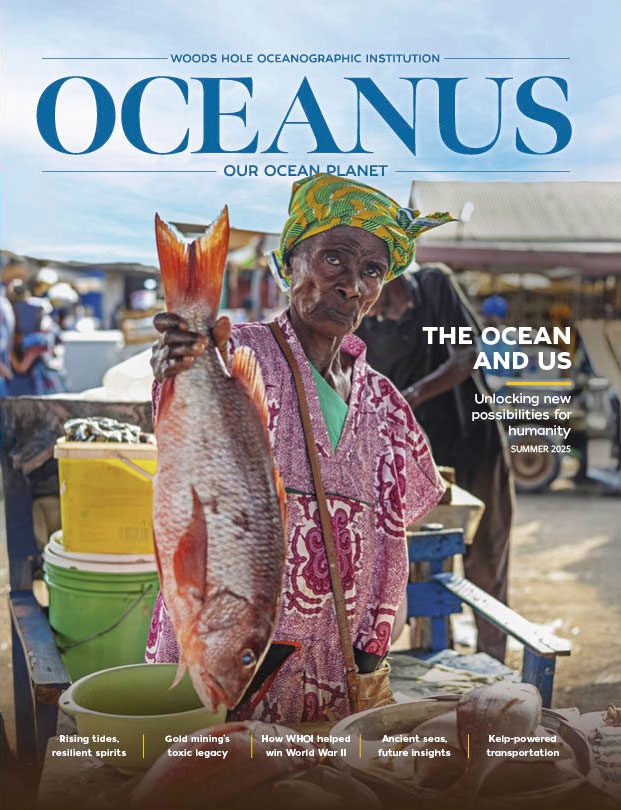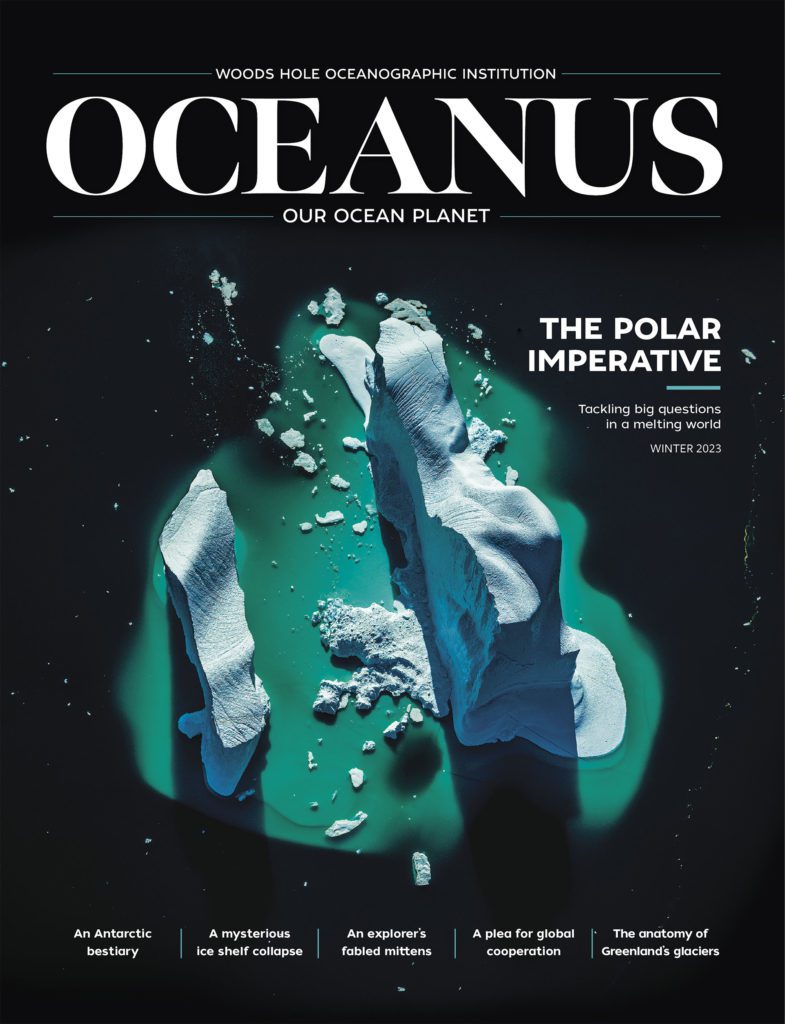Marine Mammals
Ropeless Fishing Systems Hold Promise for Fishermen—and Whales
To help advance the effort to find a feasible and cost-effective gear-marking solution, the Woods Hole Oceanographic Institution, The Pew Charitable Trusts and others are engaged in conversations with industry, enforcement, and regulators in the U.S. and Canada—which will culminate in a virtual workshop on gear marking in the coming months.
Pandemic Quiet Means We Can Eavesdrop on Rare Australian Dolphins
According to Laela Sayigh, from WHOI, who is not involved in the Burrunan research, identifying which dolphin in a pod is vocalizing at a particular time is key to deciphering their communication systems.
New Technology Can Save the Whales from Ship Collisions
In a bid to reduce the number of whale deaths, researchers Woods Hole Oceanographic Institution and collaborators worked together to develop Whale Safe, a new detection system provides mariners with up to date information about whales present in shipping lanes.
TECHNOLOGY Whale ‘roadkill’ is on the rise off California. A new detection system could help
Launched on September 16, Whale Safe is the result of a collaboration between the Benioff Ocean Initiative and several U.S. universities and oceanographic organizations, including the Woods Hole Oceanographic Institution, Scripps Institution of Oceanography, the University of California Santa Barbara, and the Unive
Whale watching and learning
Whales aren’t the only large creature in the ocean; there’s also cargo ships. When the two collide, it’s fatal to whales and barely noticeable to large ships cruising through the Santa Barbara Channel.
Want to Save the Whales? Eavesdrop on Their Calls
“Moorings are typically made from chain, so they clank a lot,” says Mark Baumgartner, whale ecologist and senior scientist at the Woods Hole Oceanographic Institution, who helped develop the technology. “And that’s not really good when you’re trying to hear animals that are many miles away making sounds.”
North Atlantic right whales ‘could be extinct within 20 years’ as krill they eat migrate away due to climate change and commercial fishing impacts their habitat
A comprehensive new study of North Atlantic right whales has found the species is significantly smaller and less healthy than southern right whales and could be wiped out in the next 20 years without intervention.
Endangered North Atlantic right whales return to Canadian waters
For North Atlantic right whales as individuals, and as a species, things are going terribly wrong,” said Michael Moore from the Woods Hole Oceanographic Institution.
In another significant ruling for right whales, a federal judge rules that Massachusetts is violating the Endangered Species Act
Michael Moore, director of the Marine Mammal Center at WHOI, lauded the ruling, saying the “judge understands the simple truth that if there is rope in the water column, and whales come and go in the region, entanglement risk is real, and significant in terms of mortality and morbidity, especially for reproductive success.”
Pop-up pots and the search for ‘whale-safe’ gear
Mark Baumgartner, associate scientist at the Woods Hole Oceanographic Institute, has talked about the entanglement issue with Porter and believes ropeless fishing can work, and that it may be the best option for enabling fishermen and whales to share the same waters.
As North Atlantic right whales slide toward extinction, a desperate search for hope
For the species to survive, they need to be producing closer to 29 calves a year, said Michael Moore, director of the Marine Mammal Center at the Woods Hole Oceanographic Institution.
Whales may owe their efficient digestion to millions of tiny microbes
A study by NSF-funded researchers at WHOI shows that the microbial communities inside whales may play an important role in the digestion of one of the ocean’s most abundant carbon-rich lipids: wax esters.
Offshore Wind May Help The Planet — But Will It Hurt Whales?
As whale populations have grown, the WCS and its collaborator, the Woods Hole Oceanographic Institution, have been monitoring them, with an eye toward mediating conflicts with the ocean’s heaviest users: cargo ships, commercial fishing trawlers and the U.S. military.
Right whale population drops to 409, as consortium urges more action
“Yet another year of decline for right whales,” said Consortium Chairman and Woods Hole Oceanographic Institution researcher Mark Baumgartner.
Scientists meeting in Portland say right whales on the way to extinction
The future continues to grow ever darker for the highly endangered right whale, a species that has been in decline every year since 2010 and is at the heart of regulatory protection efforts threatening to upend Maine’s valuable lobster fishery.
How Drones Are Helping Scientists Figure Out Whales’ Weight
Michael J. Moore, a biologist and director of the Marine Mammal Center at the Woods Hole Oceanographic Institution, tells Jessica Leigh Hester of Atlas Obscura, body mass “tells you about the health of the animal, and in the context of its environment, it gives you a sense of how it’s doing nutritionally.”
Drone-Piloting Scientists ‘Weighed’ Whales From 130 Feet in the Air
A whale’s mass “tells you about the health of the animal, and in the context of its environment, it gives you a sense of how it’s doing nutritionally,” says Michael J. Moore, a biologist and director of the Marine Mammal Center at the Woods Hole Oceanographic Institution.
Since When Did Animals Become Synonymous With Our Grief?
After a story about 52 Blue called “Song of the Sea, a Cappella and Unanswered” appeared in The New York Times in 2004, letters from heartsick readers flooded Woods Hole Oceanographic Institution, one of the laboratories that had studied the whale. 52 Blue sang at a different frequency than all the other blue whales they had studied before.
Whale populations in New York Harbor are booming—here’s why
Woods Hole Oceanographic Institution and the New York Aquarium teamed up to deploy a high-tech acoustic buoy named Melville, 22 miles south of Fire Island. Whales communicate mostly via sound, and each species has distinct calls (and even dialects).
Local fishermen assist leatherback research
After several years, Kara Dodge began to do other work with turtles, in particular a “TurtleCam” project with Woods Hole Oceanographic Institution engineer Amy Kukulya. The project involved tagging and tailing turtles with autonomous underwater vehicles to study diving behavior, eating habits, and assess ways to reduce entanglements.
New Technology Will Listen For Underwater Whale Traffic In An Effort To Reduce Ship Strikes
Scientists from the Benioff Ocean Initiative and Woods Hole Oceanographic Institution have deployed a a hydrophone, or underwater microphone, to listen for whale traffic in the Santa Barbara Channel. They hope to use the microphone to help prevent collisions between whales and boats – which are often deadly to whales.
Lobstermen seek help in protecting right whales
Michael Moore, a scientist at the Woods Hole Oceanographic Institution, raised the concern that the “torturous” process the fisheries service was undertaking to write and enact the new regulations would “still come up short.”
Scientists Team With Fishermen on Tracking Technology
Scientists from the Center for Coastal Studies and the Woods Hole Oceanographic Institution are working with local commercial fishermen to install video monitoring equipment on gillnets.
Infrared Cameras Could Help Ships Avoid Whales
An interview with Dan Zitterbart, a WHOI scientist who is testing a new thermal infrared imaging system to detection whales in busy waterways to prevent ship strikes.



